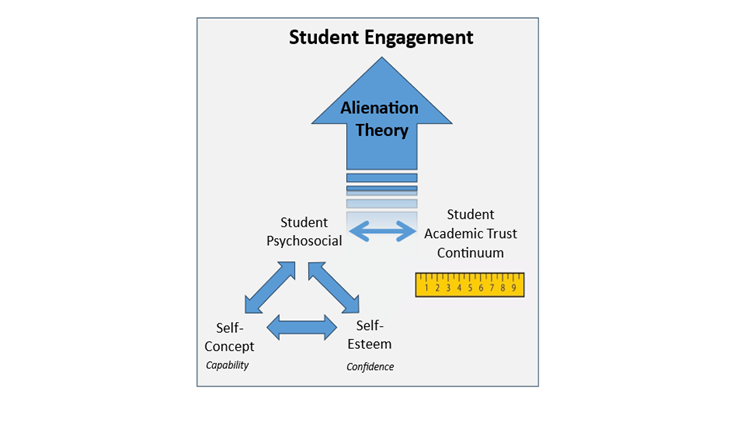by Fadia Dakka
The increasing exposure of higher education sectors worldwide to market mechanisms (eg privatisation in and of higher education, platformisation and assetization) generates market-making pressures, technologies and relations that are changing university missions and academic practices in both research and teaching, altering not only forms of knowledge production but also academic identities (Lewis et al, 2022). These corporate, competitive systems operate in and through regimes of time acceleration and compression (Rosa & Trejo-Mathys, 2013; Wajcman & Dodd (eds), 2017) that enable capitalist accumulation via a proliferation of calculative practices and surveillance techniques driven by instrumental logics. In essence, the timescapes of the ‘accelerated academy’ (Vostal, 2016) have come to be not just dominated but defined by the linear rhythms of knowledge production, accumulation, consumption, and distribution.
In this context, ever-present tensions continue to pit institutional time scarcity/pressure against the often non-linear times, rhythms and practices that characterise the craft of intellectual work. These are acutely visible in doctoral education, which is considered both a liminal space-time of profound transformation for students and a rite of passage through which doctoral candidates enter the academic community.
Doctoral students in the accelerated academy experience tremendous institutional pressures to complete their research projects within tight timeframes punctuated by developmental milestones. At the same time, they are pressed to publish and participate in externally funded projects before completing their course of studies, to secure a positional advantage in a hyper-competitive, precarious job market.
In such a climate, pressures to develop core academic skills such as academic writing abound, as a quick glance at the vast literature available to both novice and accomplished researchers to help them improve the quality and quantity of writing reveals (eg Sword, 2017, 2023; Murray, 2025; Wyse, 2017; Moran, 2019; Young & Ferguson, 2021; Thomson, 2023; Sternad & Power, 2023).
Much less attention is devoted to reading as an autonomous practice in relation to educational research. Reading is generally approached instrumentally for research and mostly equated with a strategic, extractive process whereby academics retrieve, survey or review the information needed for writing to maximise efficiency and speed (Fulford & Hodgson (eds) 2016; Boulous Walker, 2017).
Doctoral students are taught to tackle the volume of readings by deploying selective, skim and speed-reading techniques that ‘teach’ them a practical method to ‘fillet’ publications (Silverman, 2010 p323) or ‘gut(ting) an article or book for the material you need’ (Thomas, 2013 p67). Without dismissing the validity of these outcome-oriented techniques, I argue that reading should be approached and investigated as research, which is to say as a philosophical orientation whose intimate relation with thinking (meditation and contemplation) and writing (as a method of inquiry) constitutes a conjuncture with transformative potential for both the reader and the text (Hoveid & Hoveid, 2013; Dakka & Wade, 2018). [RC1] [FD2]
In 2024, I was awarded a BA/Leverhulme grant that allowed me to examine, in collaboration with Norwegian colleagues, the under-researched area of reading habits, rhythms and practices among doctoral students in two countries, the UK and Norway, characterised by a markedly different cultural political economy of higher education. The project set out to explore how a diverse group of doctoral students related to, made sense of, and engaged with reading as a practice, intellectually and emotionally. Through such exploration, the team intended to examine pedagogical and philosophical implications for doctoral education, supervision, and, more generally, higher education through a distinct spatiotemporal lens.
The project experimented with slow reading (Boulous Walker, 2017) as an ethico-political countermovement that invites us to dwell with the text and reflect on the transformations it can produce within the self and the educational experience tout-court. Examining the practice of reading is, therefore, vital to foster the development of the criticality and creativity that inform the students’ thinking and, ultimately, their writing, helping to create better conditions for meaningful educational engagement.
As briefly mentioned earlier, there is a dearth of literature in educational research focused explicitly and directly on reading as a research practice. Conversely, Reading Theory and Reader-Response criticism (Bennett, 1995) are well-established strands in literary studies.
Two contributions inspired the project in the cognate fields of philosophy, pedagogy, and education ethics, underpinning the theoretical and methodological framework adopted: Aldridge (2019), exploring the association between reading, higher education and educational engagement through the phenomenological literary theorisations of Rita Felski (2015) and Marielle Macé (2013). Reading here is considered as a phenomenological ‘orientation’ with ontological character: the entanglement of body, thought, and sense makes reading an ‘embodied mode of attentiveness’ with ‘rhythms of rapprochement and distancing, relaxation and suspense, movement and hesitation’ (Felski 2015, p176). Lastly, Boulous Walker (2017) introduces the concept of ‘slow reading’, or reading philosophically against the institution. This practice stands in opposition to the institutional time, efficiency, and productivity pressures that prevent the intense, contemplative attitude toward research that is typical of active educational engagement. The author calls, therefore, for slow reading, careful reading, and re-reading as antidotes against institutional contexts dominated by speed and the cult of efficiency.
Bridging cultural sociology and philosophy of education, the project combined Hermeneutic Phenomenology (Schutz, 1972; Ricoeur, 1984) and Rhythmanalysis (Lefebvre, 2004) to gain insight into the lived experiences, embodied and cognitive processes of meaning-making, and spatiotemporal (rhythmic) dimensions of reading among doctoral students.
The complementarity of these frameworks enabled a richer and deeper understanding of the phenomenon from a socio-cultural and philosophical perspective. The rhythmanalytical dimension drew on the oeuvre of the French philosopher and sociologist Henri Lefebvre. Conceived as both a sensory method and a philosophical disposition, Rhythmanalysis (2004) foregrounds the question of the everyday and its rhythms, offering insightful takes on repetition, difference, appropriation and dwelling. Lefebvre’s analysis of the conflicting rhythms of the social and the critical moments that revive/subvert the humdrum of the quotidian pivot on the experience and resonance of bodies in space-time, their imbrication with the fabric of the social and the multiplicity of their perceptual interrelations with human and more-than-human environments. Methodologically, Rhythmanalysis enabled a closer look at the students’ reading habits, rhythms and practices in relation to their doctoral studies. The emphasis on spatio-temporality and (auto-)ethnographic observations made it possible to register and grasp the tensions that derive from clashes between meso institutional constraints and demands (eg set timeframes for completion; developmental milestones), micro individual responses and circumstances (eg different modes of study, private and/or professional commitments) and macro societal context (eg cognitive, extractive capitalism).
The phenomenological facet of the project drew on the hermeneutic, existential, and ontological dimensions found in Ricoeur’s and Schutz’s philosophy, which are concerned with grasping experiential meanings and understanding the complexity of human lifeworld. Acknowledging the entanglement of being and Dasein as an ontological standpoint, human lived experiences are situated within a contingent spatiotemporality and understood through an interpretivist epistemology founded on intersubjectivity, intentionality and hermeneutics.
This phenomenological-rhythmanalytical inquiry was therefore designed to explore students’ cognitive and affective experiences and practices of reading as they unfolded in the spaces and times of their doctoral education. The project involved two groups of doctoral candidates based in the Education department of, respectively, a teaching-intensive university in the West Midlands of England (Birmingham, UK), and a large, research-intensive university in Norway (Trondheim).
The first phase of data collection involved Focus Groups and Reflective Diaries. It foregrounded the times, places, and rhythms of reading, considering reading modalities and patterns of doctoral students in the context of institutional demands vis-à-vis personal and professional constraints. Rhythmanalysis was employed both as a method (reflective diaries) and as an interpretive, diagnostic tool to uncover and critically reflect on arrhythmias (ruptures) and/or eurythmic pockets in the reading patterns of doctoral students.
The second data collection phase relied on hermeneutic phenomenological techniques, such as Episodic Narrative Interviews (Mueller, 2019), to delve deeper into the affective, material, and cognitive experience that connects and transforms students and their readings.
The final stage of data collection involved an experiment in collective slow reading and re-reading against the institution, inspired by Boulous Walker’s philosophical reading and Felman’s description of the interpretative process as a never-ending ‘turn of the screw’ (Felman, 1977) that generates a hermeneutical spiral of subsequent, ever richer, and different textual interpretations.
Initial findings point to a complex and layered reading time experience, captured in its nuanced articulation by a rhythmic analysis of the students’ everyday practices, habits and affective responses.
Commonsensical as it may sound, reading takes time. Engaging with a text to interpret and understand it is time-consuming, and most of our respondents in this project discussed this. Reading seems to project an experience of oneself as a slow reader, followed by a feeling of guilt for ‘just’ reading.
Interestingly, clock time and phenomenological time appear to be juxtaposed in the reading process, creating conflicts and productive tensions for most of the PhD students in the project. For example, the students often welcome writing deadlines, as they create a linear rhythm that provides structure to their reading time. At the same time, the idea that reading should be done quickly and targeted to extract material for their thesis hovers over many participants, generating performance-related pressure and anxiety. Procedural aspects of reading, particularly managing volume and note-taking, are treated as a sign of success or failure, reinstating Rosa’s neoliberal equation of fast-winner, slow-loser in the accelerated, competitive academy (Rosa, Chapter 2 in Wajcman & Dodd (eds), 2017).
However, a deeper engagement with reading both opposes and coexists with this tendency, evoking the notion of Barthes’ idiorrhythmy (Dakka, 2024) to describe the process of discovering and imposing one’s own rhythm. This rhythm typically resists linearity and dominant structure, requiring slowness as a disposition or a mode of intense attention to oneself and the world through the encounter with text. Even more intriguingly, slowness as heightened focus and immersion often occurs within short and fragmented bursts of reading, strategically or opportunistically carved into the students’ everyday lives, resulting from an incessant act of negotiation over and encroachments with personal, professional, and institutional times.
The project explored, examined, and interpreted the rhythms and practices of reading in contemporary doctoral education along three axes: times (institutional, personal, inner, tempo, duration); spaces (physical, digital, mental); and affects as ways of relating (joy, guilt, anxiety, surprise, fantasy, etc). Together, these elements combine in unique and shifting configurations of dominant rhythms and idiosyncratic responses (rhuthmόs or idiorrhythmy), exposing the irreducibility of students’ experiences to harmful binaries (eg fast versus slow academia) while revealing the pedagogic affordances of a rhythmic and phenomenological analysis for contemporary universities. Spotlighting different approaches to reading, thinking, and writing enhances awareness of and attunement to developing one’s voice, listening and resisting capacity.
Fadia Dakka is an Associate Professor in Philosophy and Theory of Higher Education at Birmingham City University. Her interests lie at the intersection of philosophy, sociology and theory of higher education. She is currently working toward theorising Rhythm as a form of ethics underpinning critical pedagogy in higher education. She recently received a BA/Leverhulme small grant (2024-25) to examine doctoral reading habits and practices in the UK and Norway.




